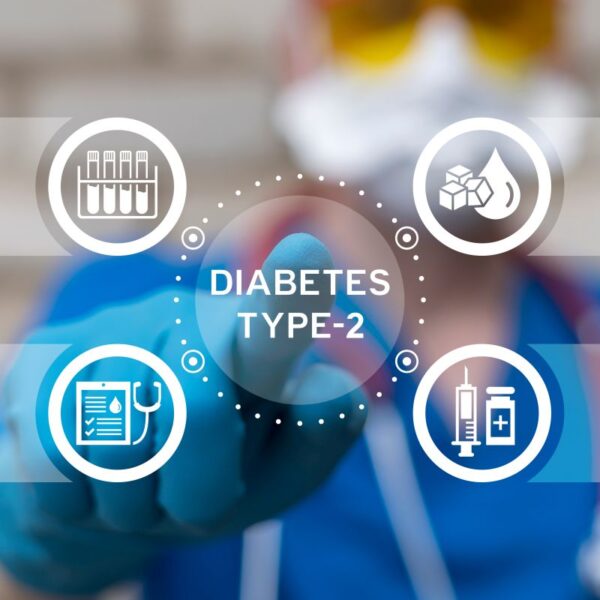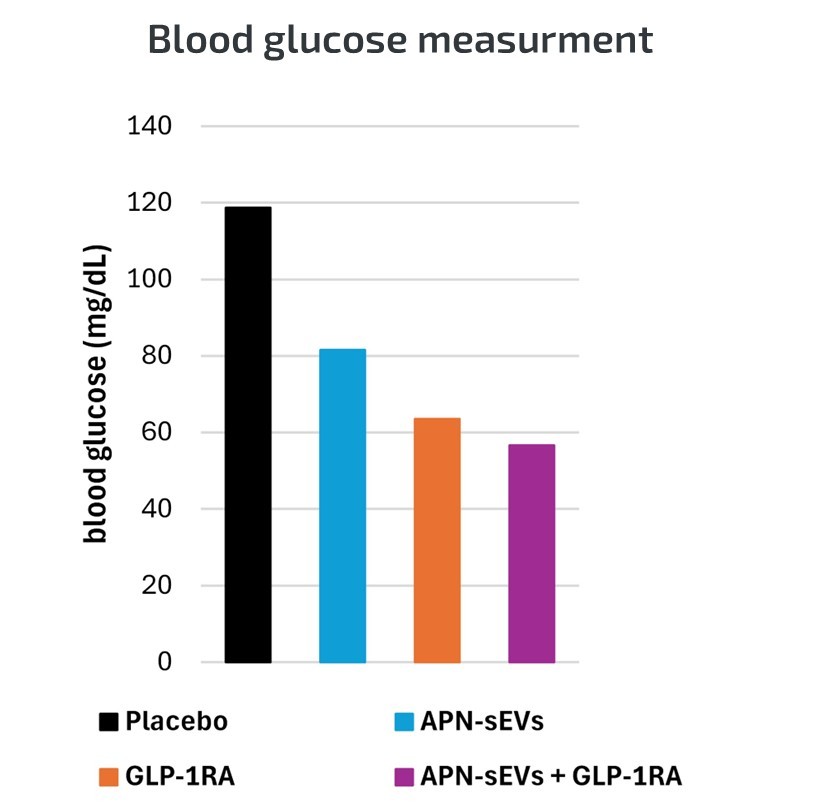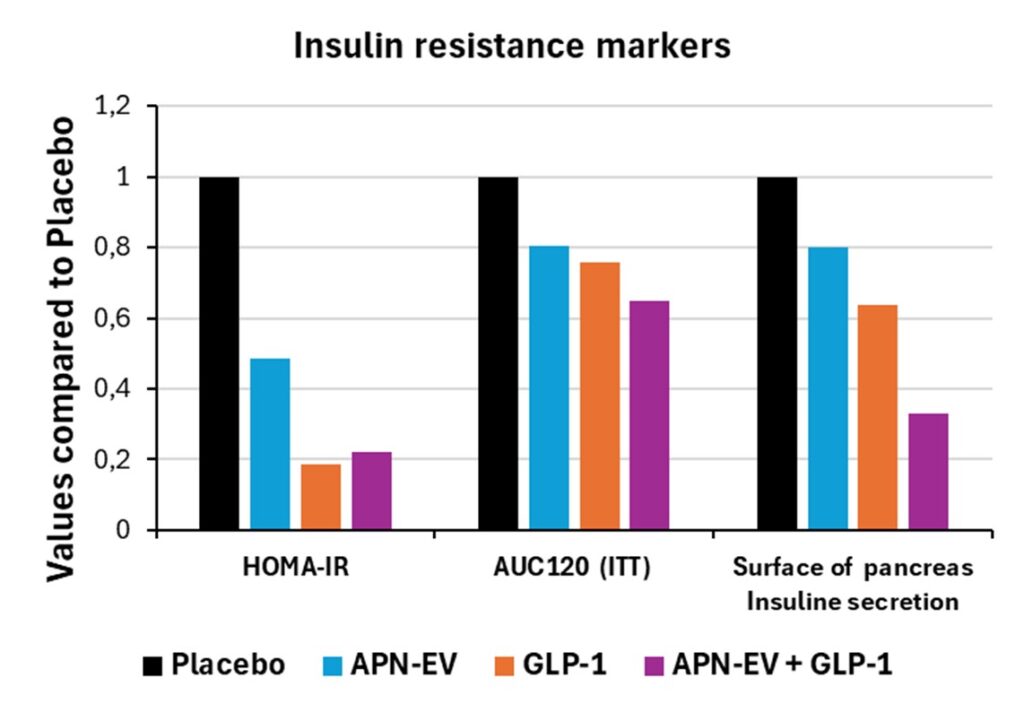APN-sEV solution for Type 2 diabetes
Adiponectin exposed on sEVs (APN-sEVs) promises to be the natural solution for combating Type 2 diabetes
Overview
Type 2 Diabete (T2D) currently affects 530 million people worldwide. T2D is a major risk factor for cardiovascular diseases (CVD) and MASLD causing the death of 1.5 million people per year in Europe with 67 million cases by 2030. The cellular and physiological mechanisms underlying the development of T2D are complex, involving pancreatic β-cell dysfunction, alterations in adipose tissue biology, and multi-organ insulin resistance. When hygienic-dietary solutions are not sufficient to improve health, most treatments consist of controlling blood sugar and blood pressure, and various treatments are applied in cases of severe complications such as those affecting feet, kidneys, eyes….


Current treatments
The first-line treatment is metformin, which improves insulin sensitivity, but has a limited effect on treating MASLD and a controversial role in preventing cardiovascular disease (CVD). PPARγ agonists, such as pioglitazone, reduce insulin resistance, yet they are associated with an elevated risk of bladder cancer, resulting in their withdrawal from the market in France. SGLT2 inhibitors also have urinary side effects. A clinical trial showed that vildagliptin, a DPP-4 inhibitor, reduces hepatic steatosis in patients with type 2 diabetes (T2D) but carries risks such as angioedema and pancreatitis and has no major effect on cardiovascular (CV) outcomes. In recent years, GLP-1 receptor agonists (GLP-1-RAs), such as liraglutide and semaglutide, have shown promise in reducing food intake. Semaglutide is approved for treating T2D, obesity, and MASLD. However, semaglutide may reduce lean body mass, and discontinuing treatment leads to reversal of benefits, including weight gain and increased blood glucose levels. This necessitates continuous treatment. Therapeutic strategies are shifting towards dual or triple agonists, such as tirzepatide, which target GLP-1 and GIP receptors. These agents may be more effective than single-receptor treatments, though they commonly cause gastrointestinal side effects.
An open door to a solution
Treatments such as metformin, DPP-4 inhibitors, GLP-1 receptor agonists (GLP-1-RAs), and tirzepatide increase adiponectin levels, which may contribute to their beneficial effects on insulin sensitivity and metabolic health. These findings align with reports of decreased adiponectin levels in individuals with T2D, particularly those who are obese or overweight. Such reductions correlate with the severity of insulin resistance and higher blood glucose levels. Thus, adiponectin appears to be a promising candidate for T2D treatment.
Adiponectin Mode of Action in T2D
INSULIN SENSITIVIZING EFFECTS
Adiponectin enhances insulin sensitivity, especially in skeletal muscle and the liver, both of which are key players in glucose and lipid metabolism. Adiponectin increases glucose uptake in muscle cells via enhanced insulin receptor signaling and decreases hepatic glucose production thereby helping to lower blood glucose levels[1].
[1] Fang H, Judd RL. Compr Physiol. 2018. doi: 10.1002/cphy.c170046.
ENHANCING FATTY ACID OXIDATION
Adiponectin increases the oxidation of fatty acids in muscle and liver tissues. This is particularly important in cases of obesity accompanied by insulin resistance, when excess fat accumulation impairs insulin function. Adiponectin activates the AMP-activated protein kinase (AMPK) pathway, leading to increased mitochondrial fatty acid oxidation. This reduces the accumulation of lipids in tissues, such as the liver, which is known as hepatic steatosis.
REDUCTION OF INFLAMMATION
Chronic low-grade inflammation is a major contributor to insulin resistance and the development of type 2 diabetes (T2D). Adiponectin decreases the expression of pro-inflammatory cytokines, such as TNF-α and IL-6, in adipose tissue and macrophages, thereby exerting potent anti-inflammatory effects.
Evidence of the positive impact of APN-sEVs in type 2 diabetes
Treating obese/diabetic mice with liver impairment (DIO/NASH) with APN-sEVs resulted in the following:
- clear regulation of blood glucose levels.
- a drastic recovery of insulin sensitivity in the organs of the treated animals, as evidenced by :
- a sharp reduction in the HOMA-IR index.
- an ITT test revealing a clear drop in the area under the curve (AUC120), accentuated by co-treatment with GLP-1RA.
- decreased insulin secretion by the pancreas, which was much greater with GLP-1RA co-treatment.
APN-sEVs have therefore been shown to be a powerful bio-therapeutic for restoring the physiological balance required for the effective treatment of diabetes mellitus.



